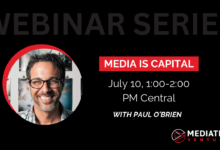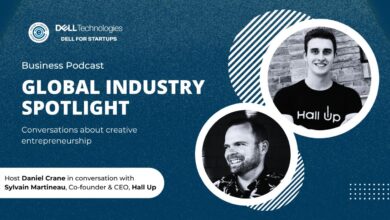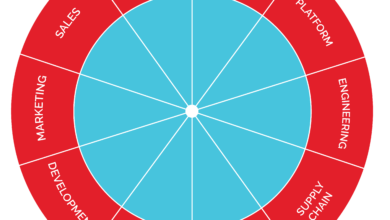
Among the most notable and renowned of all concepts in entrepreneurship is Product/Market Fit. Generally considered a discovery of the turn of the millennia, we’ve all been teaching and exploring this idea popularized by venture capital investors Marc Andreessen, thanks to the earlier work of Benchmark Capital’s Andy Rachleff and Sequoia’s Don Valentine, around 2000. Since then, it’s been an idea you can’t miss, and should appreciate, particularly since the original framework found its way into Steve Blank’s The Four Steps to the Epiphany and the Lean Startup points of view (popularized by Eric Ries).
That’s a lot of name-dropping. Names which I felt important to share both to inform and because yes, I started this article out with a controversial thought – that despite decades of support from people far more successful than I, it’s backwards.
Before I throw shade on the brilliance of what their work is meant to illuminate, let’s clarify what it teaches and encourages.
Product/Market Fit
“a first step to building a successful venture in which the company meets early adopters, gathers feedback and gauges interest in its product(s)”
That’s how Wikipedia defines product/market fit (and therefore that’s what people see when they look it up on Google.) When asked about in an incubator or advised by a mentor, people will tell founders that it’s the process of meeting early adopters to gather feedback about and gauge interest in the product.
Sounds like a very valid suggestion, and it is, make no mistake, precisely what even I always teach and advise.
Andreessen noted that, “Product/market fit means being in a good market with a product that can satisfy that market.”
Many advise further that the key step in finding product/market fit is in creating a minimum viable product, something we just explored here in considering first that marketing matters.
Begging of course, a series of questions. How do you get a minimum viable product going? How do you start without funding? How do you even find a product/market fit??
Lists in this regard are popular. Product Coalition offers a more clear direction:
- Line up your product goals first
- Come up with product hypotheses
- Prioritize the product hypotheses
- Get feedback from five customers
- Make small bets with MVP’s
- Evaluate market traction
Minimum Viable Product
The earliest, released and available version of your product, containing the minimum amount of functionality required to perform its job. Viability referring to how that product in and of itself sufficiently delivers some value and validates that you can, that people want it, and that there is opportunity in further development.
Harvard Business professor Clayton Christensen notes that about 95 percent of new products fail, and that the problem is often that their creators are using an ineffective market segmentation mechanism. More or less pointing out a parallel with the conventional startup wisdom (that 90% of startups fail) while reinforcing what we already know well as entrepreneurs: it’s that market segmentation point that Christensen makes, not knowing the customer, that fuels our failures.
Too many treat startups as new, small businesses – be those mentors, advisors, or investors. What’s certain is that there is a difference between how a new restaurant and a new venture approach their problems. On that can we agree? Certainly, we can agree that there is a massive operational and organizational difference between a small business and a large company, so regardless of wording, we might find consensus that a “startup” is not the same as a “new business.”
According to Steve Blank, a startup is a “temporary organization designed to search for a repeatable and scalable business model”, while the small business runs according to the fixed business model.
And therein, can we appreciate that the development and delivery of a New Product differs between companies, new businesses, and startups?
- A new business is delivering a known product and model to a known customer and market opportunity
- A company delivers a new product by researching their market, talking with customers and stakeholders, and capably funding and developing the new product
- A startup doesn’t have a developed model yet, since they are currently working to find a scalable and repeatable solution to a problem. The market doesn’t actually yet exist, they’re *creating* new customers by way of a new model and solution
And with mentors, advisors, investors, largely drawn from companies and business experiences, is it critical that we are explicit in what we’re teaching and investing in with founders? That at least what we know as a startup, is that we can’t yet know what product to propose.
What jumped out to me most” [in my consideration that a Minimum Viable Media is a predecessor to a Minimum Viable Product] “was your observation on the order of information. How our learning changes based on availability. That’s a fascinating thing to explore.”
– Jordan E. Bravo; Founder of Epivore
Because its purpose is to create a customer, the business as two and only two functions: Marketing and Innovation. Marketing and Innovation produce results. All the rest are costs.
I am, first and foremost, not here to refute Product/Market Fit (so welcome to my controversial headline); we’re unequivocally here to teach and explore with you all, how best to achieve it. So let me show you another list about the process of finding Product/Market Fit:
- Identify your target customer
- Talk to your buyer
- Know what you offer as a value proposition
- Specify your minimum viable product feature set
- Measure your product-market fit
That, from Mailshake (which is an incredible platform for Sales outreach automation and optimization)
I’m seeing a trend in those lists, and in the too frequently cited advice about Product/Market Fit, that has me pondering if the wording is backwards.
Draw the connection between the customer discovery process for product/company development and the fundamentals of marketing. Marketing *should* first and foremost be about discovering what people want, NOT how to sell something to them after it’s done.
– Laurie Jakobsen; Founder & President of Jaybird Communications
How do you know your target customer? How can you be sure of those product goals and the hypotheses to test?
As a startup (no known model, with no existing customers), how on earth can talking to “customers” or “buyers” begin this process??
Product/Market Fit isn’t wrong; rather, it’s easily misleading or misunderstood, if we’re not explicit in our words and priorities conveyed.
Marketing Comes FIRST
Market/Product Fit.
Product Coalition elaborates on the process thusly, “The secret to finding market-fit is about maximising the number of product iterations, with the limited resources you have. The deeper you know about your customers, the closer you are to finding Product-Market fit.”
Now I’ll refute a bit, as you explore how you proceed, that no, the secret is NOT maximizing product iterations, that’s costly and uninformed development. The secret can’t (yet) be in deeper knowledge about your customers – it’s in deeper knowledge of your competitors, the market and history of attempts, knowing why what exists now fails, and knowing not just if customers will be satisfied but if that and your work establishes a sustainable company, competitive advantage, and solution valuable not just with customers but also partners, stakeholders, and investors.
A minimum viable product that tests and validates that a few, existing and familiar customers, agree that what you’re doing is valuable, is futile if the market will prevent what you’re doing from being successful.
Product Advisors and many founders tend to be overconfident in their experience or passion; they’re not necessarily wrong but their neglect of the broader market, to bring to market a product to test and prove their hypothesis, is a variation of confirmation bias, not validation that the investment in developing a product will actually serve the market. There is a reason that such a tremendous number of startups and products still fail: Marketing comes first. You have few shots to bring iterations of a product to market; don’t start based on the affirmation of customers (customers who we can’t yet even know are actually the customers for a new-to-market solution that has never been realized), start by marketing – studying the market, developing an audience and demand, talking with hundreds of not “customers” but just people, and exploring that the Minimum Viable Media is what you need first.
Market/Product Fit. “Being in a good market with a product that can satisfy that market,” means first intimately knowing the market.
Start with the End In Mind
I do want to continue encouraging Product/Market Fit and your understanding, appreciation, and use of what it’s guiding you to do, so some perspective on how we know our efforts have been successful: how we know we have found Product/Market Fit? At the end of the day, my point is meant provoke deeper thought about how you proceed, not judge and criticize the brilliance established.
One distinguished metric for Product/Market Fit is if at 40% of surveyed customers indicate that they would be “very disappointed” if they no longer have access it. This is known as The 40% Rule and is equally appreciated if 40% of customers consider the product “must have.”
There are five metrics (marketing metrics, by the way) that anything online can use verify if they achieved Product/Market Fit:
- Bounce Rate (Low Bounce Rate means a visitor’s expectation is being met)
- Time on Site (High Time on Site indicates that the experience of the user is satisfactory)
- Pages per Visit (More Page per Visit suggests the same thing)
- Returning Visitors (Reflect that your work had the intended impact and people are coming back)
- Customer Lifetime Value (Measuring the profitability each customer over time)
But wield those metrics with caution because again, too often, interpretation of the metrics can easily mislead when other market considerations aren’t first evaluated:
- Low Bounce Rate also correlates to the audience drawn to the site, the expectation set in your messaging, and a wonderfully designed landing page
- Time on Site can be inflated by confusion, depth of content, or videos
- Pages per Visit tend to be higher, valuably so, thanks to great articles or news, or might be misleading if the onboarding process is extensive or complicated
- Returning Visitors are equally a sign of desperation for a solution or an enthusiastically supportive community
- And Customer Lifetime Value, hopefully obviously, requires knowing the customers, being developed beyond a Minimum Viable Product, and time
Marketing discerns for you and your venture, what those expectations should be, how best to drive other values and engagement, the audiences to reach first and what they expect to see and hear, and the business models to test so that you might put in place monetization and actually have customers that might deliver value in their lifetime with you.
Misinterpreting customers’ desire for a solution as desire for a company’s product or service will end up being a false positive for Product/Market Fit and for a startup and sparce-ly resourced team, what’s actually required is a high degree of Product/Market Fit: The 40% Rule, with Customers and High Lifetime Value is when we KNOW we HAVE Product/Market Fit; starting out, study the market, intimately, to know first what SHOULD work in what you invest in bringing to market to test.







I finally used an analogy recently that got a founder to “click” — I asked if he had a significant other. He look at me weird (of course) then said he didn’t.
I then asked him if he would remain single forever because since he didn’t have a significant other, he’d never know what it takes to be dateable…he looked at me and said, “well that’s just dumb.” Then a few seconds later…BOOM…it clicked.
Who ever said “What is in a name?” The name is everything it seems. 3 Cheers to Market/Product fit. Makes absolute sense and I agree based on my personal experience. I was initially focused on product/market fit and from the school of hard knocks, I am now focused on Market/Product fit. Glad it has a name.
Ram Prasad that’s what I’m toying with lately. That these words inform and education. They advise
“Minimum Viable Product” is there not something that matters BEFORE that? For example
https://mediatech.ventures/minimum-viable-media-is-a-better-start-than-minimum-viable-product/
Paul O’Brien makes sense. Love the name “Minimum Viable Media”. It however seems entrepreneurs are self confident that they know the market and deep dive into MVP. This makes the education that you do very important.
For anyone working a start up now I am available for support. Here is my Take; Paul great narrative and solid. Most successful startups I have seen are when someone or a team from the target industry saw a substantial problem that needed solving, were able to develop a solution for that problem in a product, market it, and deliver it. In my coaching of startups over many years. I often see people with a product/idea looking for a market. That turns the whole thing backwards. Like here is a solution. So let’s go find the people that have this problem. I’ve only seen 1 of those so far in 20 plus years be successful, and that only means at this point they have gotten substantial funding to service a potential market. Other times I see people mash up 2 or 3 interesting ideas, buzzwords, and then try and sell that as a new idea. Still not knowing where to take it, how to get to market or what’s next. That ends up with pivot after pivot after pivot burn after burn after burn and fund raise after fund raise good luck with that it is the hard path. I agree 100% with you Paul, what is the problem, what is the market, what solutions can we invent to cure that problem for that market.
Precisely the experiences that plague me as well Steve Barcik.
I’m tiring of the feedback in a chat with a startup, “how many people have you talked about this with? You’re building the product, you’ve spoken with hundreds I imagine, to know what should be done, yet?”
“Oh, we know what needs to done”
“Great, but then I’m curious how I can help and struggling to grasp what we can work through for you…”
“We’re seeking to raise capital to launch it”
“And yet… you know what needs to be done but haven’t talked to anyone? Say, maybe, investors about whether or not they’d fund such a thing?”
Same here, oh i have a solution i don’t need to do market research… it will sell it self… we each learn our own way, i to was a hard headed start up founder.
Same here, oh i have a solution i don’t need to do market research… it will sell it self… we each learn our own way, i to was a hard headed start up founder.
Subtle but genius often is. Kudos.
Ya know, your twist feels like a twist on Stephen Covey’s classic, “Seek first to understand, then to be understood.” A quote that altered my understanding of life itself.
Mark Simchock you say it and I’m realizing I really don’t give 7 Habits enough credit or thought in our curriculum. We’re constantly saying win-win and end in mind (my fund-raising talk always starts with that point of view)
It would be interesting to use this on state and federal policy makers also….:) Paul O’Brien
Right? In fact, I’m a big fan of the parallels between entrepreneurship and public policy; considering how what startups do might be a more efficient model for government to emulate.
Too many policy makers try to solve the problem, with the point here really being that you can’t just know how to solve the problem and start with that. Enable the market to solve the problem by iterating the role you play (the product) in being part of that.
I’m going to print and hang on my wall, I’m serious. Almost 3 years into this whole startup thing and fortunately still part of the 10% making it, but still struggling to get the attention of our market despite the fact that our team possesses decades of real-world experience and credentials that prove expertise. The incubators and accelerators made it sound like so much fun to be an entrepreneur!
The team might enjoy Scott Mac Leod, this point of view I have preceding this one, that Minimum Viable Product isn’t where to start; rather, start with a minimally viable amount of media, from which to draw feedback and support, and have that attention prepared.
https://mediatech.ventures/minimum-viable-media-is-a-better-start-than-minimum-viable-product/
when I first started thinking about what I wanted to do for my technology company, I had an idea of a target avatar. Having almost 30 years of interacting with people in the health in wellness space, I was still surprised with results. I knew I wanted to build a new type of AI with the result of being able to empower people better around habit change. Instead of making technology, I made a pilot online class that instead of just telling people what to do, I have them empowerment lessons with lists of options they could try. Then taught them how to recognize if something was working for them or not. Summary: 3 facebook posts lead to 85 people joining a challenge, which lead to 25 people buying a 3 month program for me. I made 12k and had all 25 people interact for the full 3 months which is unheard of!! It was all run through a fb group. So there was literally no overhead except for me hoping on a video call once a week and chatting and guiding. Now I have marketing proof, empowerment proof, and finally we get to build technology supporting what we thought.
Good piece. Thanks for writing / sharing.
Very insightful! Thanks for sharing!
Paul O’Brien – At what point should an MVP be built? Should it be after we sign up customers using the minimum viable media? Earlier? what are the indicators that it is time to build an MVP?
Ram Prasad WHEN? When you have evidence from the market that existing solutions are not what they’re seeking, and that they’ll reasonably support your attempt at a solution.
You don’t prove that people need/want something by building what you think and hoping, that’s backwards. You prove that people need/want something and deliver that.
There is no reason you’re not immediately building an MVP if you appreciate that MVP doesn’t mean “software” “platform” or “app.” That, if you discover and can prove that what exists now is insufficient, and that your approach is better, build a landing page (make that your MVP) getting people to subscribe to a newsletter providing advice about how it should work. If people sign up and pay for that value they aren’t getting otherwise, boom.
The messaging can all be the same, you’re just not yet providing a complete product or platform. But if people still agree that it’s needed, and what you are working to build and deliver is that, why would they not sign up and support that now?
I’ve heard the argument that too many startups start “marketing” too early. Put another way, it’s the companies that start “branding” efforts when they have a dozen or so customers (e.g. way too early). Rather than getting early data, supporting those early customers so they are actually satisfied and happy. The argument being it’s typically not more marketing that’s needed in early stage startups, but more figuring out the market.
Mark Biw 100%
Marketing != Advertising
Marketing != Promotions
Marketing != Branding or messaging nor sales
Those are things Marketing does having first determined what do do, how, why, when, and where
Paul O’Brien I hear ya, in spite of the terminology being so muddled. This isn’t medicine or physics, this is business social science. And the truth is, I think we’re searching for the most scientific/empirical approach to it all. Whatever it is.
Another thought-provoking article, Paul!
I too have felt trepidation about the MVP concept. While I LOVE the idea of starting small and iterating my way to a successful product, it’s key to remember that “Marketing *should* first and foremost be about discovering what people want, NOT how to sell something to them after it’s done.”
If I jump out with a product that hasn’t had that “minimal” level of market introspection before I start, I can easily waste large amounts of time and money without ever evolving a product that’s compelling enough to buy (a must-have). That principle is multiplied when I’m working to disrupt an existing market. Many times customers are of little help (what? did he really say that?), not because they aren’t bright, but because they’ve become successful by using products that already exist, not by helping entrepreneurs dream up new ones. Without sufficient study and thought about the target market, it’s very easy to end up with a product built for a market size of one – me.
“Marketing *should* first and foremost be about discovering what people want, NOT how to sell something to them after it’s done.” why is that so lost on people Bob??
Feels like “marketing” is such a scary word for founders. Especially early on. Though it could just mean talking to people. And telling them what your idea is. If they like it, you get feedback. If they don’t, you get feedback. And that loop only broadens as you build.
On a personal note, of your 5 metrics… Epivore is out to flip 3 on its head. I’m after fewer pages viewed, less time on site, and what’s considered a fast bounce rate. Our goal is if it takes you 20 minutes to find something to watch, then you should come to Epivore, find a show, and leave in less than that.
That fear is what we collectively need to help people overcome.
Too many of those founders have worked with “Marketers” who are really just hoping to run ads or write content. Too many have been advised to focus on Customers and Sales, only too see what they think is “Marketing” as falling short of delivering that.
Love the notion of flipping a few of those preconceived notions about the metrics because that reinforces my point; that a founder or business without understanding of the metrics, why they are what they are, and what they mean, is easily misled.
I agree, the way it is now, founders develop the product and try to get market fit. I wish we could have Market/Problem/Product Fit, but that’s not as catchy a phrase
We can change that and make it catchy!